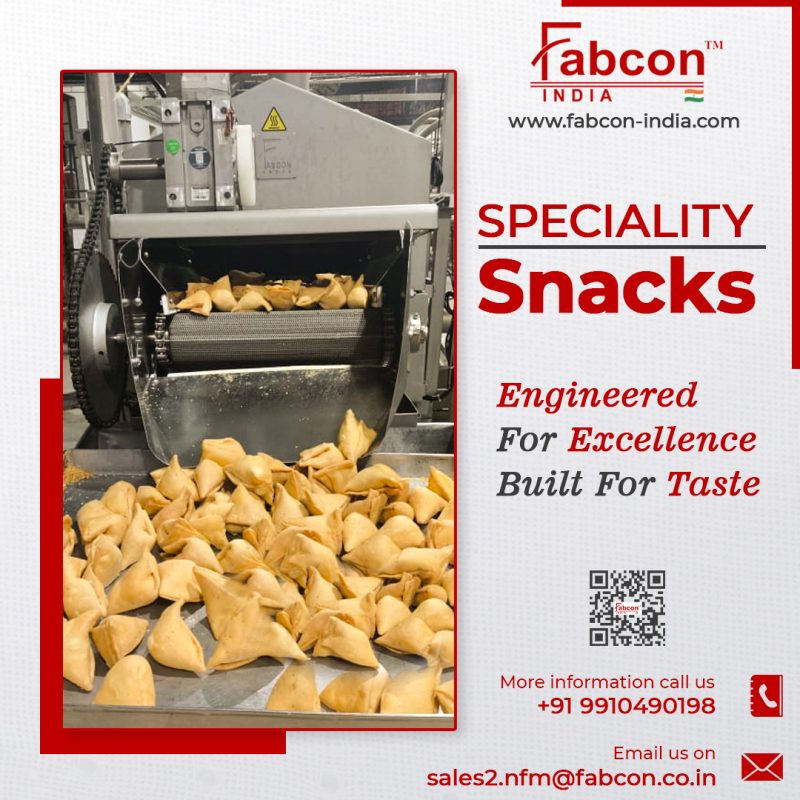A samosa frying line machine is a specialized piece of equipment designed for mass production of samosas, automating the frying process. It is typically used by food manufacturers, restaurants, or catering services to increase efficiency and maintain consistency in product quality. Here’s an overview of its components and functionality:
Key Features:
- Conveyor System:
-
- Carries samosas through the frying process.
- Typically made of stainless steel mesh or perforated belts that are food-grade and heat-resistant.
- Fryer:
-
- The central component where the samosas are fried.
- Uses a controlled oil bath with adjustable temperature settings for consistent cooking.
- Oil Filtration System:
-
- Continuously filters the oil to remove crumbs and debris, maintaining oil quality and extending its life.
- Heating System:
-
- Powered by gas, electricity, or thermal oil, providing uniform heating to the frying chamber.
- Cooling Section:
-
- A conveyor system that cools samosas after frying, making them ready for packaging.
- Oil Drain System:
-
- Allows excess oil to drip off the samosas after frying, ensuring crispness.
- Automation Options:
-
- Timers, sensors, and programmable controls for consistency and ease of operation.
- Some models integrate with upstream (filling and folding) and downstream (packaging) equipment.
- Capacity:
-
- Machines come in varying capacities, from small-scale production (e.g., 50-100 kg/hour) to large-scale operations (500+ kg/hour).
Benefits:
- Efficiency: Reduces manual labor and speeds up production.
- Consistency: Ensures uniform frying for better quality control.
- Hygiene: Complies with food safety standards.
- Cost-Effective: Saves oil and energy through efficient systems.

